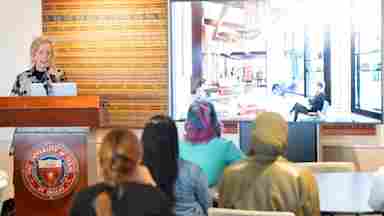Can your built environment promote brain energy?
Color, lighting and noise can influence how the brain works. When you cannot be in nature, cultivating an environment that elicits positive sensations can help reduce stress and elevate brain function.SCIENCE SAYS:
Connecting with nature has been shown to boost cognition as well as happiness. Color, lighting and noise can influence how the brain works. When you cannot be in nature, cultivating an environment that elicits positive sensations can help reduce stress and elevate brain function.WAYS TO BEGIN:
- Design your space to elicit feelings of nature — enrich your surroundings with selective elements that remind you of beauty in nature, like colors and artwork that imitate the natural world.
- Explore the impact of lighting on your mood and productivity — consider how changes in lighting throughout the day affect how you feel, and different lighting options for your home or workspace.
- Reflect on auditory impact disruptions — if noises that you cannot silence sometimes challenge your ability to focus, try ways to reduce intrusive sounds, like using noise-blocking headphones.
- Give yourself an environment built for brain breaks — take five (5) five-minute "brain breaks" throughout the day to clear your mind and reclaim brain energy; encourage the habit with the right environment (like one with places to stretch your body, practice breathwork and focus on visuals that are calming and beautiful).


